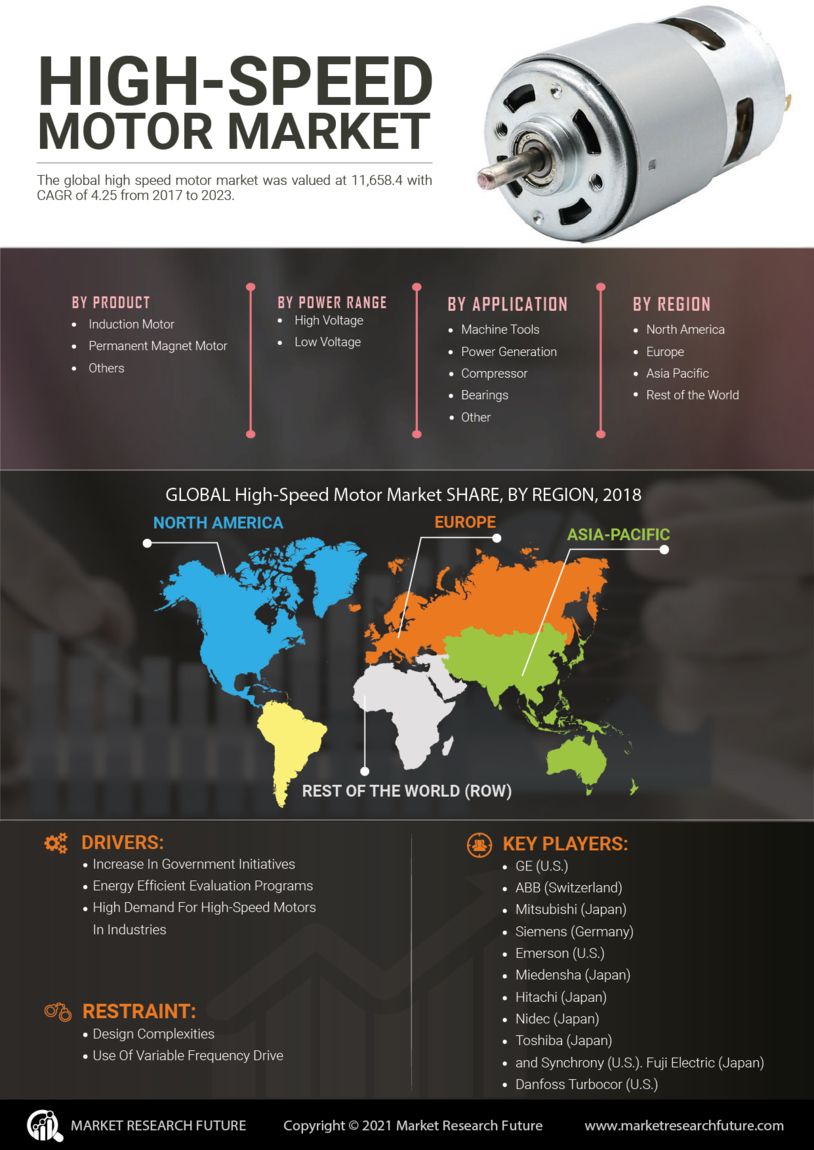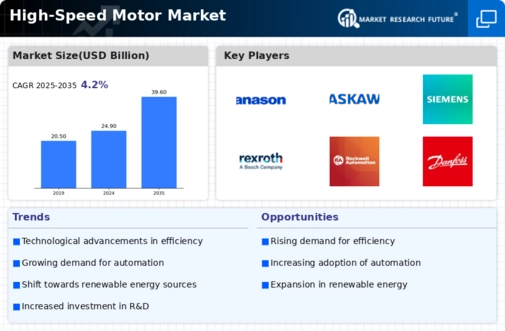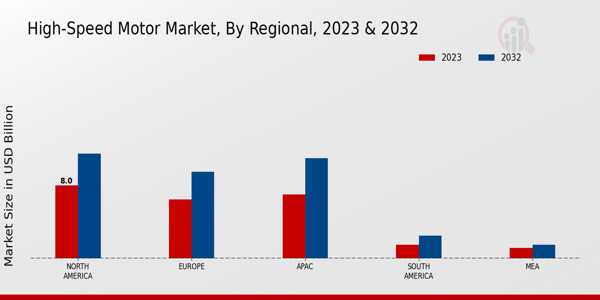Market Growth Projections
The Global High-Speed Motor Market Industry is projected to experience substantial growth over the coming years. With a market value anticipated to reach 24.9 USD Billion in 2024 and further expand to 39.6 USD Billion by 2035, the industry is poised for a robust trajectory. The expected CAGR of 4.32% from 2025 to 2035 indicates a steady increase in demand for high-speed motors across various sectors. This growth is likely driven by technological advancements, increasing industrial automation, and the rising emphasis on energy efficiency. The market's expansion reflects the evolving landscape of motor technologies and their applications.
Technological Advancements
The Global High-Speed Motor Market Industry is experiencing rapid technological advancements that enhance motor efficiency and performance. Innovations such as improved materials and advanced manufacturing techniques contribute to the development of high-speed motors with better power-to-weight ratios. For instance, the integration of permanent magnet technology has led to motors that operate at higher speeds while consuming less energy. This trend is expected to drive the market, as industries increasingly seek to optimize their operations. As a result, the market is projected to reach 24.9 USD Billion in 2024, reflecting the growing demand for efficient and high-performance motors.
Energy Efficiency Regulations
The Global High-Speed Motor Market Industry is significantly influenced by stringent energy efficiency regulations imposed by governments worldwide. These regulations aim to reduce energy consumption and greenhouse gas emissions, prompting industries to adopt more efficient motor technologies. High-speed motors, known for their superior energy efficiency, are increasingly favored as they comply with these regulations. Consequently, manufacturers are investing in the development of high-speed motors that meet or exceed these standards. This regulatory environment is expected to bolster market growth, as industries seek to align with sustainability goals while enhancing operational efficiency.
Emerging Markets and Urbanization
The Global High-Speed Motor Market Industry is experiencing growth driven by emerging markets and urbanization trends. As developing countries industrialize, there is a growing need for efficient motor solutions to support infrastructure development and manufacturing processes. Urbanization leads to increased demand for high-speed motors in transportation systems, elevators, and HVAC systems. This trend is expected to create new opportunities for manufacturers, as they cater to the evolving needs of these markets. The expansion of urban areas and the subsequent rise in industrial activities are likely to contribute to the overall growth of the high-speed motor market.
Growth in Renewable Energy Sector
The Global High-Speed Motor Market Industry is benefiting from the growth of the renewable energy sector, particularly in wind and solar power applications. High-speed motors play a vital role in the operation of renewable energy systems, such as wind turbines and solar tracking systems. The increasing investment in renewable energy infrastructure is likely to drive demand for high-speed motors, as they contribute to improved energy conversion and efficiency. As the global focus shifts towards sustainable energy solutions, the market is poised for growth, with a projected CAGR of 4.32% from 2025 to 2035, reflecting the rising importance of high-speed motors in renewable energy applications.
Rising Demand in Industrial Applications
The Global High-Speed Motor Market Industry is witnessing a surge in demand from various industrial applications, including manufacturing, automotive, and aerospace sectors. High-speed motors are crucial for applications requiring precision and high efficiency, such as CNC machines and robotics. The increasing automation in industries is likely to propel the adoption of high-speed motors, as they offer enhanced performance and reduced operational costs. This trend is anticipated to contribute to the market's growth, with projections indicating a market value of 39.6 USD Billion by 2035, driven by the need for advanced motor solutions in industrial settings.





















